Solitary Wasps
Some wasp are social—they build communal nests, the ones presented on this page are solitary. Each adult female is fertile and provides food for her own offspring. Eight shown below are:
 Black and yellow mud dauber (Sceliphron caementarium),
Black and yellow mud dauber (Sceliphron caementarium), Sand wasp (Bembix Americana),
Sand wasp (Bembix Americana), Cuckoo wasp (Chrysididae sp.),
Cuckoo wasp (Chrysididae sp.), Sphecid apoid wasp
Sphecid apoid wasp Grass–carrying wasp (Isodontia mexicana)?
Grass–carrying wasp (Isodontia mexicana)? digger wasp ((Ectemnius sp.)?
digger wasp ((Ectemnius sp.)? common spiny digger wasp (Oxybelus uniglumis)
common spiny digger wasp (Oxybelus uniglumis) Unidentified small black wasp
Unidentified small black waspThis site also has a page about local social wasps.
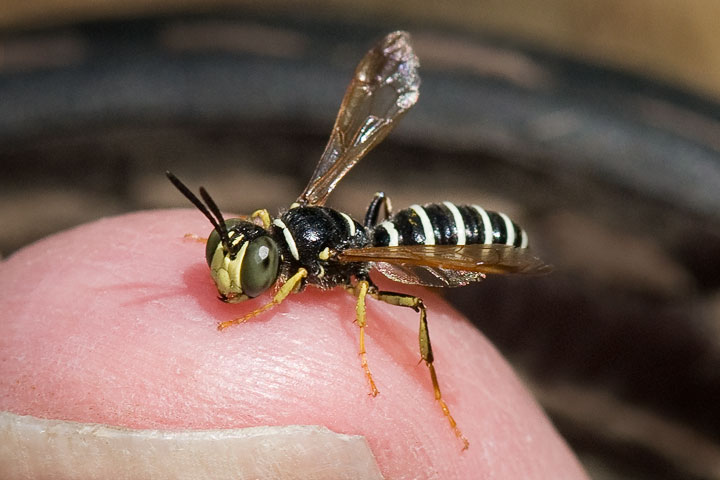 This tiny fellow resting on my toe is a sphecid apoid wasp (subfamily Philanthinae; Genus Cerceris? or Eucerceris?). It is solitary and predatory. Adult females nest in the ground. ID by RWT
This tiny fellow resting on my toe is a sphecid apoid wasp (subfamily Philanthinae; Genus Cerceris? or Eucerceris?). It is solitary and predatory. Adult females nest in the ground. ID by RWT
 This cuckoo wasp (Chrysis angolensis) is a solitary wasp which lays its eggs in a host’s nest. Its larvae then consume the host’s egg or larva, and then it consumes the host’s provisions. A favoured victim is the black and yellow mud dauber.
This cuckoo wasp (Chrysis angolensis) is a solitary wasp which lays its eggs in a host’s nest. Its larvae then consume the host’s egg or larva, and then it consumes the host’s provisions. A favoured victim is the black and yellow mud dauber.
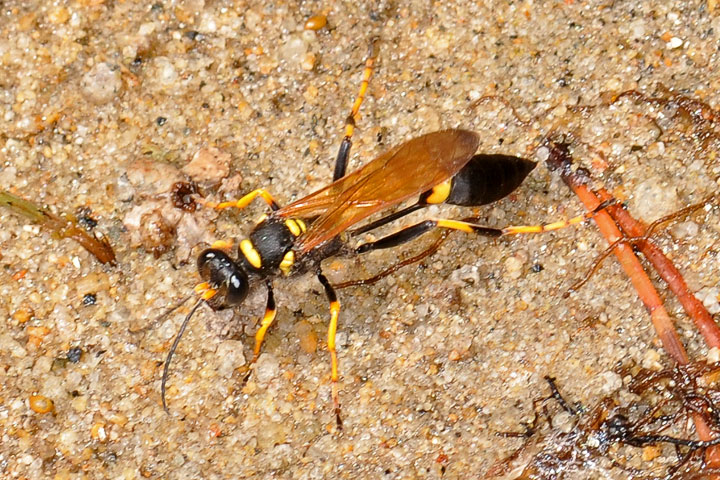 The black and yellow mud dauber (Sceliphron caementarium) builds mud nests in sheltered locations. The mud dauber provisions its nests with the spiders it has stung. ID by RAC
The black and yellow mud dauber (Sceliphron caementarium) builds mud nests in sheltered locations. The mud dauber provisions its nests with the spiders it has stung. ID by RAC
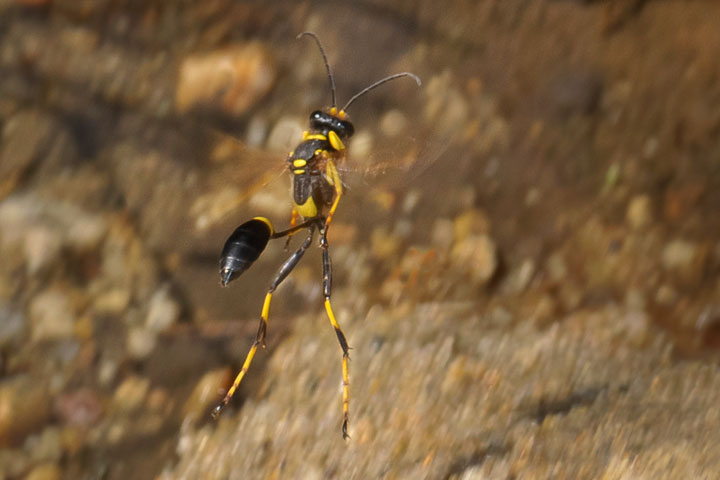 A black and white mud dauber (Sceliphron caementarium) is caught in flight.
A black and white mud dauber (Sceliphron caementarium) is caught in flight.
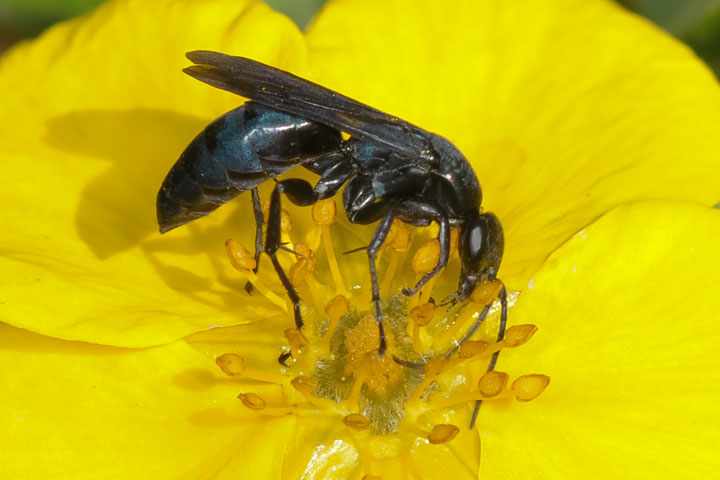 An unknown small black wasp.
An unknown small black wasp.
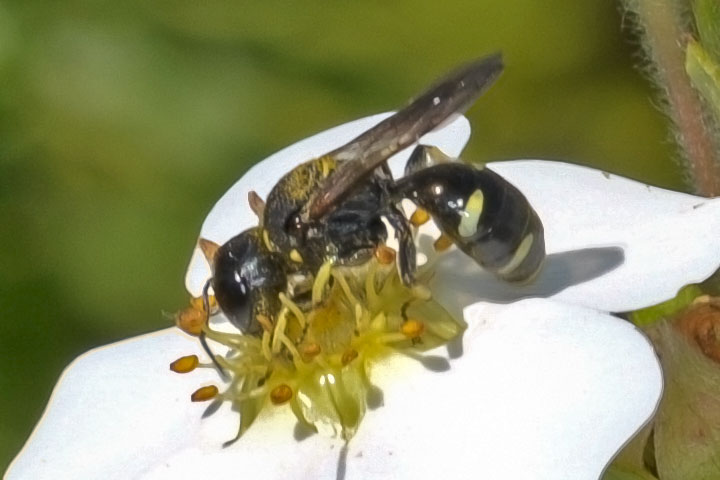 A digger wasp (Ectemnius sp.)?
A digger wasp (Ectemnius sp.)?
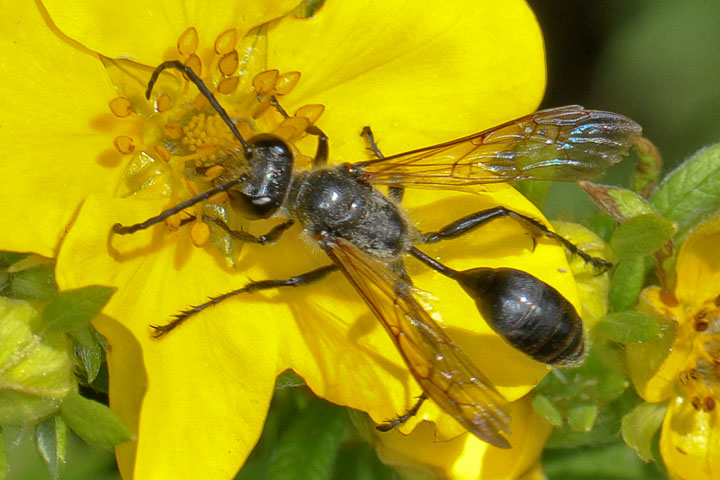 A grass–carrying wasp (Isodontia mexicana ?) has a thread waist. Females carry grass to line a nest. Then she hunts for, paralyses, and carries a cricket to the nest. Eggs are laid and emerging larvae feed on the living, but immobile crickets.
A grass–carrying wasp (Isodontia mexicana ?) has a thread waist. Females carry grass to line a nest. Then she hunts for, paralyses, and carries a cricket to the nest. Eggs are laid and emerging larvae feed on the living, but immobile crickets.
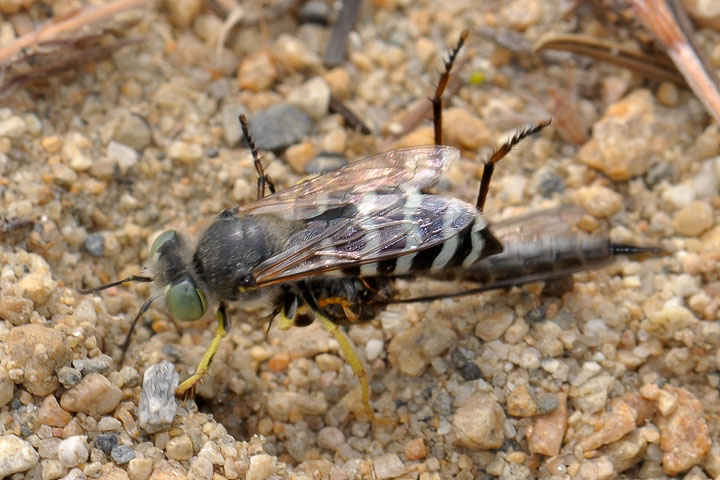 A sand wasp has paralyzed a robber fly and is dragging it back to its nest in the sand where it will lay an egg on it.
A sand wasp has paralyzed a robber fly and is dragging it back to its nest in the sand where it will lay an egg on it.
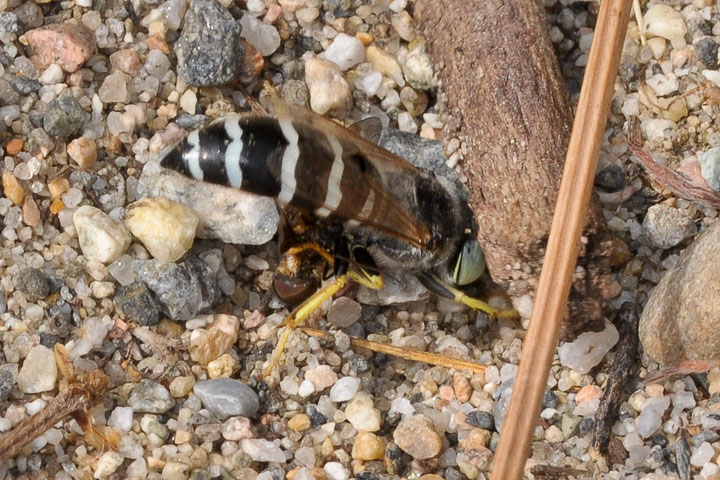 A sand wasp is dragging its victim down into a nest in the sand.
A sand wasp is dragging its victim down into a nest in the sand.
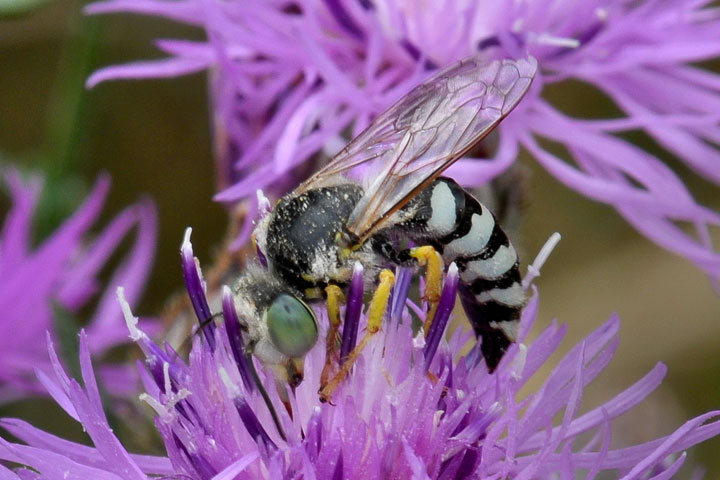 The sand wasp (Bembix Americana) sips nectar, but soon will hunt prey to provision its nest with food for its developing larva.
The sand wasp (Bembix Americana) sips nectar, but soon will hunt prey to provision its nest with food for its developing larva.
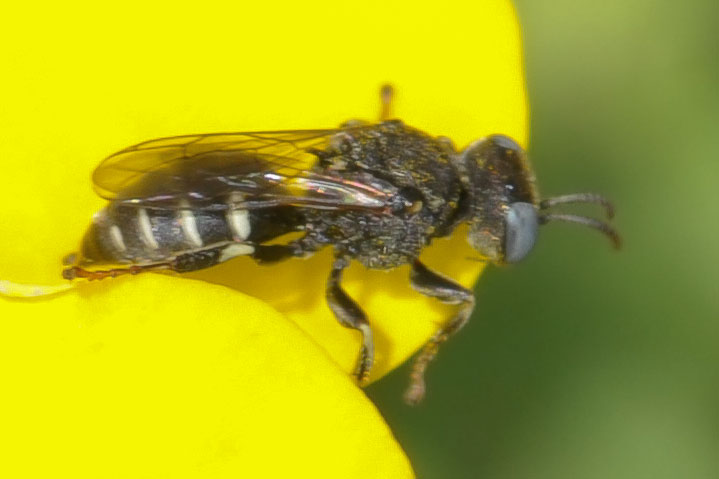 This little aqua–eyed wasp, found though much of the Northern Hemisphere, is a common spiny digger wasp (Oxybelus uniglumis). This is male; the female captures flies, drags them impaled on its stinger, buries them in the sand and plants an egg on them. ID by Matthias Buck
This little aqua–eyed wasp, found though much of the Northern Hemisphere, is a common spiny digger wasp (Oxybelus uniglumis). This is male; the female captures flies, drags them impaled on its stinger, buries them in the sand and plants an egg on them. ID by Matthias Buck
![]()